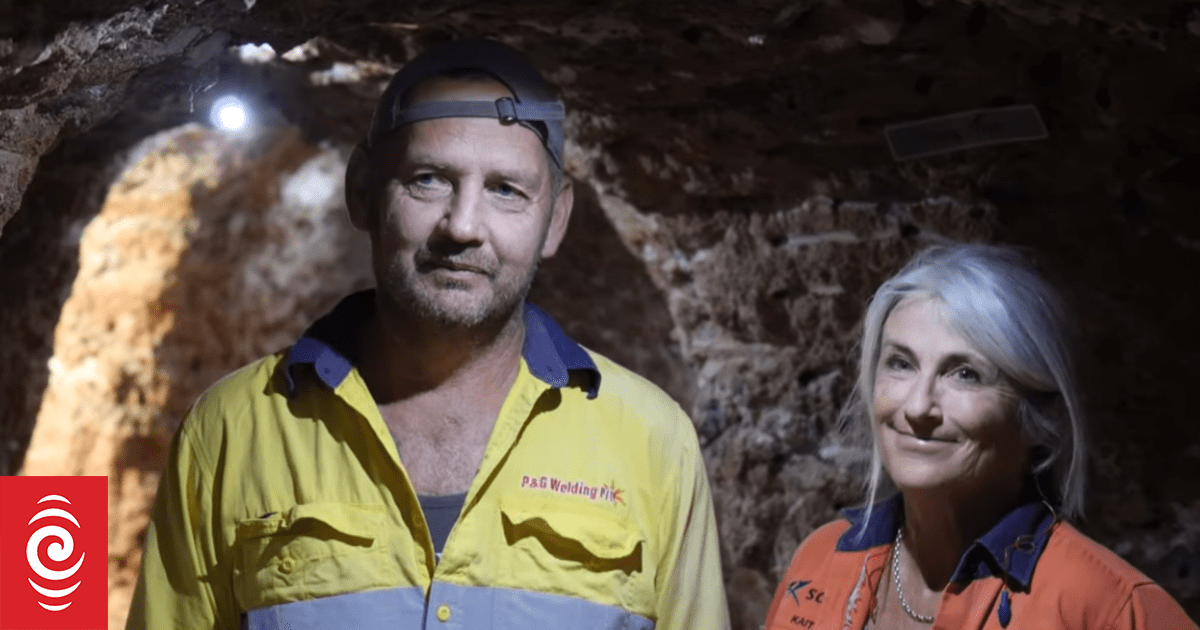Shovelling dirt is a far cry from Lynette Bailey’s more glamorous business consultancy work in New Zealand.
But, with husband Gregg Smith, she digs and moves up to 2 tonnes of dirt from 12 metres underground while working on their sapphire mine in Queensland’s Gemfields.
The couple first purchased the mining claim after Smith toured the region on a trip around Australia in 2013, after which they decided to get off the corporate “hamster wheel”.
“We got a touch of gem fever to start off, and then the lifestyle just took over,” Smith said.
“People are fascinated by what we do because we just can’t do that sort of stuff at home.”
The pair leave NZ every winter to hunt for precious gemstones in Australia and then return to their lives when the weather warms up.
While Bailey is a business consultant, her husband works in NZ’s maintenance industry.
A ‘huge learning curve’
Bailey said their lives could not be more different when they were living on their mining claim.
“In New Zealand, we’ve got an acre [0.4 hectares], we’ve got a brand new house, we’ve got all the bells and whistles … over here we have a long drop,” she said.
“We’re off the grid, the world really stops and it’s like [how it was] 100 years ago.
“As long as we’ve got hot water for a shower and food in the cupboard, it’s all we need.”
Smith said when they first began chasing sapphires eight years ago, it was a “huge learning curve for his wife” as she had never worked a manual job.
“She crashed every night,” he said.
In 2021, the couple found a 52-carat sapphire valued at about $29,000.
In the several years since they bought their claim, Smith said they have only had about five days without finding a gem.
“I often tell people that are visiting us … when they pick a sapphire out at the end of the day and hold it up to the light, that stone hasn’t seen daylight for maybe 50 million years,” he said.
“You’re saving that little stone from being stuck in the dark for the rest of its life.”
How do they mine it?
While small-scale mining claims can be bought in Queensland, the use of heavy machinery is restricted to regular mining and exploration.
Small-scale claims are also currently subject to a state government discussion paper, with proposals to reform the sector.
Smith said their mine had a rounded roof with pillars to support it in some sections.
He says at the heart of it, the couple “just shift dirt.”
“We can’t use machinery but we can use jackhammers, so it’s jackhammer the dirt off the wall, break it up … to about fist size, so it goes through the plant better,” Smith said.
The pair load the dirt into a wheelbarrow and then send it up their mine shaft through a pulley system to be sorted above ground.
Bailey said they aimed to move about 20 wheelbarrows worth a day.
“We have fans circulating in the area, so we’ve always got fresh air down there,” she said.
“It’s always 23 degrees [Celsius]. Even if it’s a wet day, we can come down here and have a dig.”
Pioneers in ‘tummy tunnels’
While the couple’s operation allows for some power tools, small-scale mining has come a long way since the days of its pioneers.
Michelle Jarvis works as a tourist guide at Miner’s Heritage in Rubyvale, which offers the largest underground walk-in sapphire mine tour in Australia.
Jarvis said the mine, which is 440m-long, includes original “tummy tunnels” that date back as far as 1906.
At that time, miners would dig with a pick and shovel.
“Back then, it was all on their stomach and in very low-roofed tummy tunnels. It wouldn’t have been much fun,” Jarvis said.
Instead of ladders, Jarvis said miners would shimmy up and down the mine shaft using their back, hands and feet to move.
-ABC


















.png)


Discussion about this post